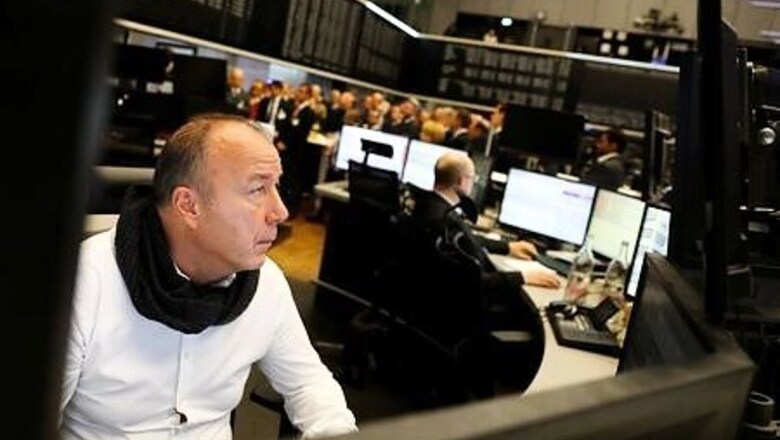
views
LONDON Europe’s blue-chip stocks rebounded on Tuesday, helped by gains for COVID-19-hit sectors such as travel and leisure, while the dollar slid on concern further U.S. fiscal stimulus could face political deadlock.
Despite the large amounts of recovery money sloshing around the system, the gains were cautious in thin holiday trade, with markets mindful of an escalating geopolitical tussle between China and the United States.
The reversal from early lows for the region’s blue-chip euro STOXX 50 , up 0.5%, was mirrored in U.S. stock futures, which rose 0.2%. That suggested Wall Street’s broadest equity gauge could inch closer to a fresh record high, a day after a its sister index the Nasdaq hit its own milestone.
The early European weakness had followed a mixed picture in Asia overnight after a fresh instalment in the escalating spat between the United States and China.
Amid concern about the close ties between Beijing and Huawei Technologies Co [HWT.UL], U.S. President Donald Trump announced further restrictions on the maker of mobile phones and other technology. He is seeking to limit the tech giant’s access to commercially available chips, a move that is likely to disrupt global supply chains.
The early sea of red for European equities soon turned green, however, with German, Italian and Spanish stocks gaining 0.6%-0.9%, led by sectors including autos and the travel and leisure sector.
Britain’s blue-chip FTSE 100 , the region’s biggest equity market, was also higher by late morning, up 0.4% but held back slightly by miner BHP Group , which missed on profits and warned on slowing global growth.
One of those backing further gains for equity markets was Mark Hafaele, chief investment officer at UBS Global Wealth Management.
“We emphasize a positive outlook for risk assets, but advise investors that they may need to adjust their strategies to optimize their portfolio for the next phase of the recovery,” he said in a note to clients.
“Adding risk exposure with markets at or near all-time highs can be daunting, but studies continue to show that time in the market is far more important than timing the market.”
Investors had to balance the moves against Huawei with Trump’s comments that China was meeting its obligations under the trade deal, pushing the Chinese currency to a more than five-month high against the greenback.
In other currency markets, the overarching theme was broadening dollar weakness, which weighed on European government bond yields and lifted the prices of alternative safe-haven assets such as gold.
The latest blow to the struggling dollar came from disappointing manufacturing and mortgage data, which led the greenback to hit a fresh 5-1/2 year low against the Swiss franc. It also neared a two-year low against a basket of its rivals, hit earlier this month.
In bonds, benchmark 10-year U.S. Treasuries were last down around 1 basis point at 0.6752. In Europe, German government bond yields held steady at a three-day low, ahead of flash PMI activity surveys on Friday.
In commodities, oil prices edged lower, giving up a slice of their recent gains after OPEC+ said the producer grouping was almost fully complying with output cuts.
Brent crude was down 15 cents, or 0.3%, at $45.22 a barrel, after gaining 1.3% on Monday. U.S. crude was down 0.5%, at $42.68 a barrel, having risen 2.1% in the previous session
Safe-haven gold closed higher after Berkshire Hathaway also disclosed a stake in Toronto-based Barrick Gold Corp , one of the world’s largest mining companies.
Spot gold added 1.1% to once again breach the $2,000 an ounce barrier, trading at $2,007 an ounce.
(Editing by David Evans and Catherine Evans)
Disclaimer: This post has been auto-published from an agency feed without any modifications to the text and has not been reviewed by an editor


















Comments
0 comment